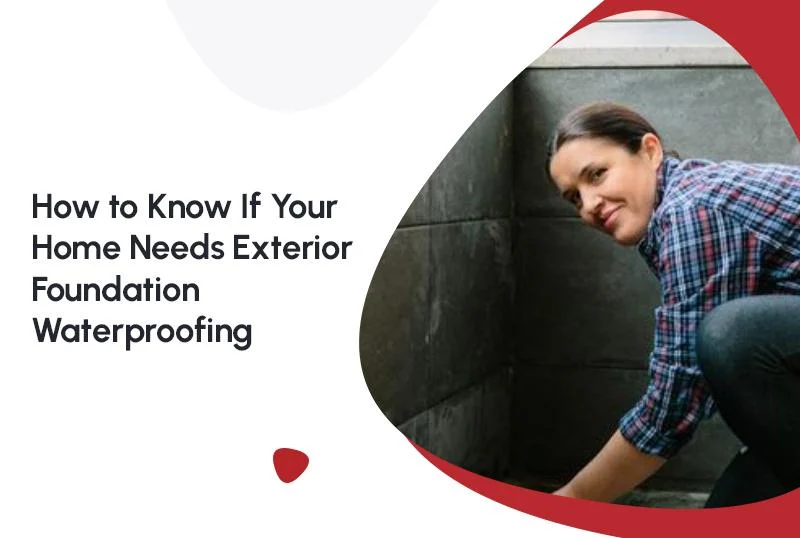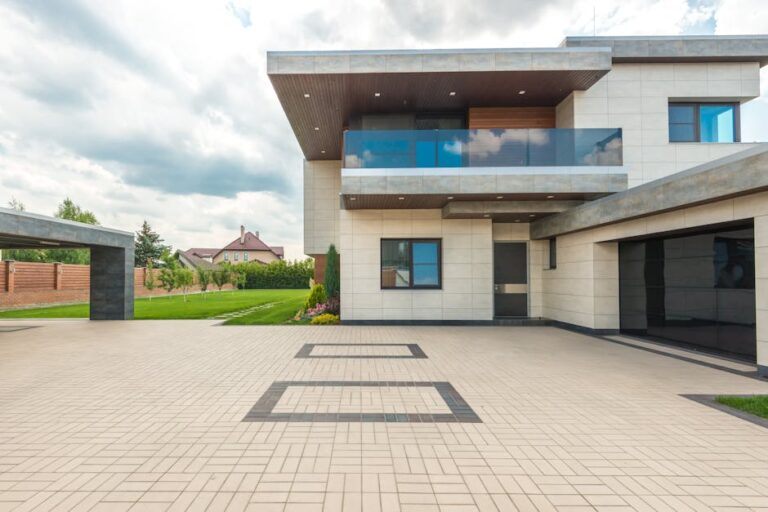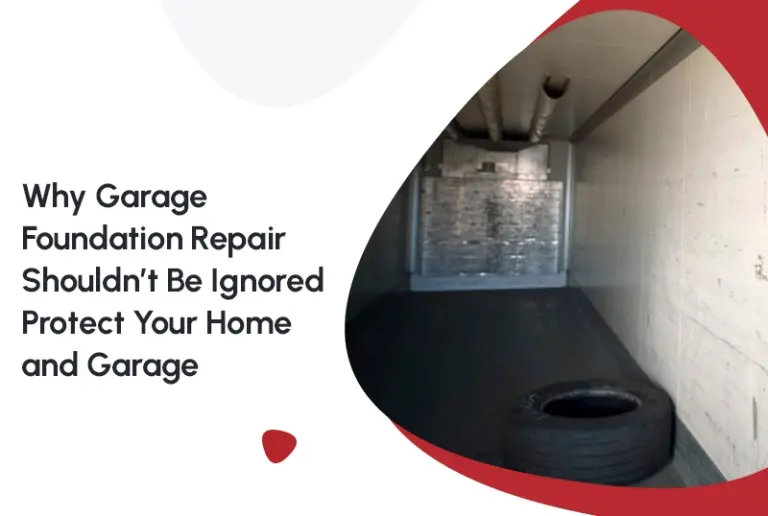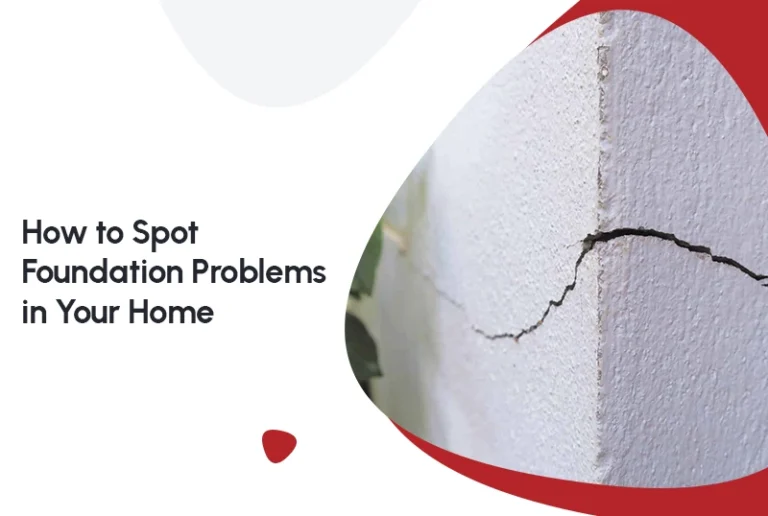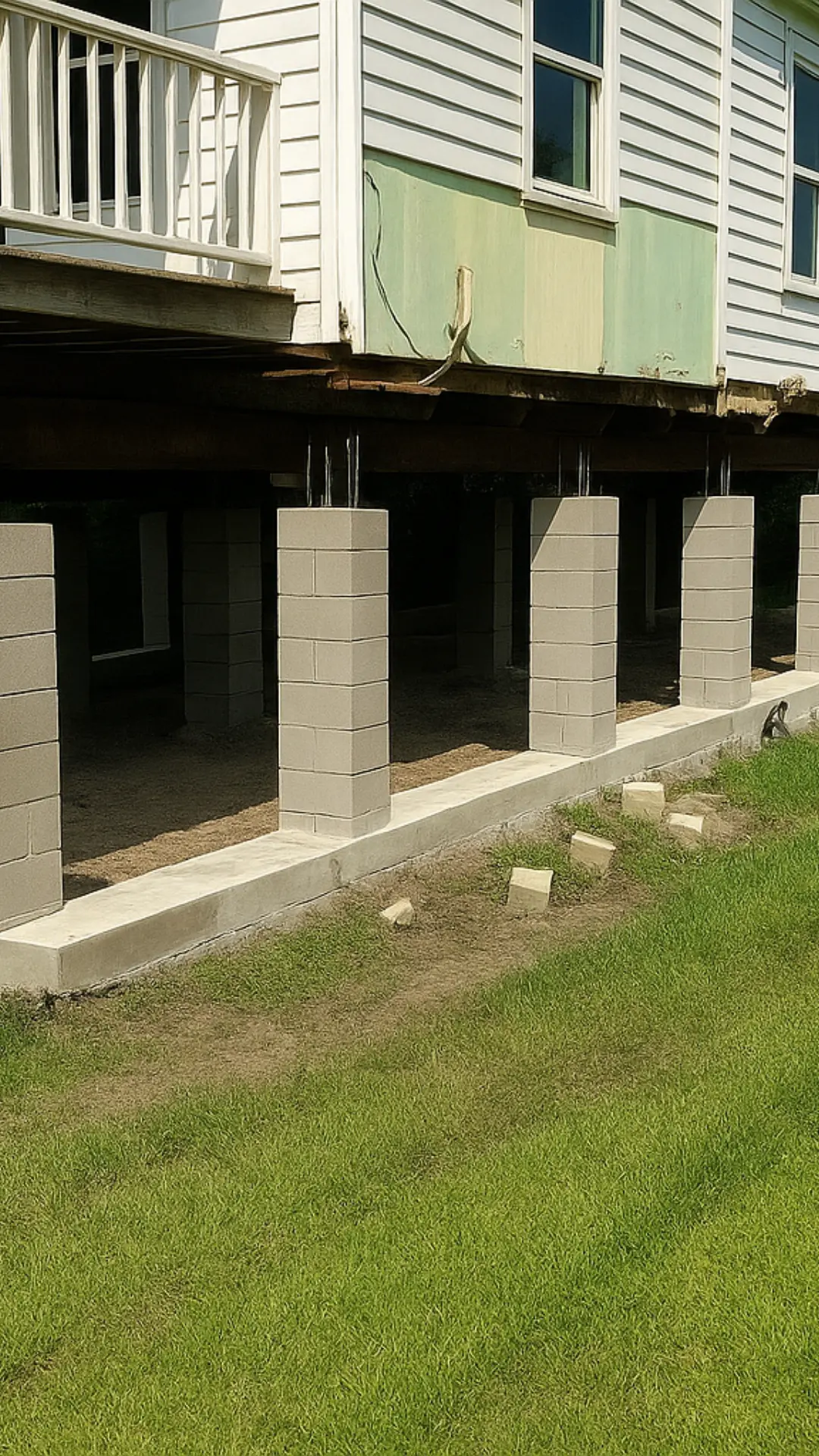You step into your basement after a heavy rainstorm, only to find water pooling on the floor. Or perhaps you notice cracks in the walls, accompanied by that musty, damp smell. These signs aren’t just inconveniences, they’re often early indicators of foundation issues that can lead to severe structural damage if not addressed promptly.
If you have a monolithic slab foundation or any other foundation type, water infiltration can cause significant damage over time. But here’s the good news: exterior foundation waterproofing could be your solution to this problem. It can help prevent future water damage and keep your home’s foundation intact for the long haul.
In this blog, we’ll take a deep dive into exterior foundation waterproofing, explore how you can identify the signs that your home needs it, and explain why it’s an essential step for foundation maintenance. Let’s get started!
What Is Exterior Foundation Waterproofing?
Exterior foundation waterproofing is a preventive measure that involves applying a protective barrier on the outer walls of your foundation to prevent water from seeping into your basement or crawl space. Unlike interior waterproofing, which addresses water that’s already inside your home, exterior foundation waterproofing is a proactive approach, stopping water before it has the chance to infiltrate.
This method is particularly useful for homes with slab foundations, where cracks in the concrete may develop over time due to settling or moisture exposure. By applying a waterproof membrane or other types of protective coatings to the exterior walls of your foundation, you’re essentially creating a shield against water damage.
Why Is Exterior Foundation Waterproofing Important?
Water is one of the biggest culprits when it comes to foundation damage. According to the Insurance Information Institute, water damage is responsible for roughly 1 in 5 homeowner insurance claims. Without proper waterproofing, water can seep into your foundation, causing the soil around it to swell, leading to cracks, and eventually, structural damage.
Water can also erode the material beneath your foundation and weaken the concrete over time. Early detection and prevention can save you a lot of hassle and money down the line, preventing larger problems like mold, mildew, and even foundation settlement.
Common Problems Caused by Water Infiltration:
- Cracking and Settling: Excess water or moisture can cause your foundation to shift or crack.
- Mold and Mildew Growth: Moisture invites mold and mildew, which can cause health problems.
- Wood Rot: If you have wooden support beams in your basement, water exposure can cause them to rot.
- Rusting: Water infiltration can lead to the rusting of steel reinforcements within the foundation.
- Increased Utility Costs: Damp foundations can lead to insulation problems, increasing your energy bills.
Signs You Need Exterior Foundation Waterproofing
When it comes to foundation issues, early intervention is crucial. Here are the most common signs that your home may need exterior foundation waterproofing:
1. Visible Cracks in the Foundation
Small hairline cracks in concrete foundations are common and often nothing to worry about. However, larger or widening cracks could indicate that water is infiltrating the slab and causing structural issues. Water can seep through these cracks and weaken the foundation over time, leading to further damage.
Pro Tip: Use a tape measure to monitor crack growth over time. If the cracks continue to grow, it’s time to consult a professional for waterproofing.
2. Damp or Musty Smell in the Basement
A damp or musty smell is a telltale sign of moisture accumulation in your basement or crawl space. This can be caused by water seeping through cracks or entering from the outside due to inadequate drainage. The presence of water in these spaces creates the perfect environment for mold and mildew to thrive, which can negatively impact both your home’s structure and the health of your family.
3. Pooling Water Around the Foundation
Water pooling near your foundation is a serious concern. Poor drainage or improperly sloped landscaping around the foundation can cause water to collect near the concrete. Over time, this can lead to water seeping into your foundation and causing cracks or shifts. If you notice water pooling near your foundation after rainfall, you need to act fast to prevent it from entering your basement or crawl space.
4. Efflorescence on Basement Walls
Efflorescence is a white, powdery substance that forms on concrete when water passes through it and evaporates, leaving behind mineral deposits. If you notice efflorescence on your basement walls, it’s a clear sign that moisture is infiltrating your foundation. Left untreated, this can lead to the deterioration of your concrete and potential structural damage.
5. Gaps Between Trim and Walls
If you start noticing gaps between the trim and walls of your foundation, or doors and windows that stick, it may be a sign that the foundation has shifted due to water damage. This is a common problem caused by hydrostatic pressure, the force exerted by water as it builds up around the foundation. Hydrostatic pressure can lead to settling, which causes doors, windows, and trim to misalign.
6. Soil Erosion Near the Foundation
If you notice that the soil near your foundation is eroding or washing away, this could be a sign that water is flowing against your foundation and causing damage. Over time, this erosion can lead to uneven settling and foundation issues that will require more intensive repairs if left unaddressed.
How Does Exterior Foundation Waterproofing Work?
Exterior foundation waterproofing is a relatively straightforward process, but it requires specialized expertise. Here’s how it typically works:
1. Excavation
The first step involves digging around your home’s foundation to expose the exterior walls. This excavation process allows contractors to properly apply the waterproofing material directly to the walls without any obstructions. Depending on your home’s size and the depth of your foundation, this can take several hours or days.
2. Surface Preparation
Once the foundation walls are exposed, the next step is cleaning the surface to remove any dirt, debris, and old waterproofing materials. Proper surface preparation ensures that the waterproofing membrane adheres correctly and forms an effective barrier against water infiltration.
3. Crack Repair
Any cracks in the foundation walls are sealed using high-quality waterproof sealants or fillers. This step is crucial because even small cracks can allow water to seep through and compromise the foundation. Properly filling these cracks prevents future water damage and ensures a solid waterproof barrier.
4. Application of Waterproof Membrane
Once the surface is clean and cracks are filled, a waterproof membrane is applied to the entire exterior foundation wall. This membrane is made from materials like bitumen or rubberized coatings, which provide excellent water resistance and protect your foundation from moisture.
5. Backfilling and Drainage
After the waterproofing material is applied, the area around the foundation is backfilled with soil, and proper drainage systems are put in place. French drains, sump pumps, and gutters are installed to ensure that water is redirected away from the foundation. This helps prevent future water accumulation around your home’s base.
How FNF Foundation Can Help
At FNF Foundation, we specialize in foundation repair services and exterior foundation waterproofing. Whether you’re dealing with cracks, poor drainage, or soil movement, our team is equipped with the expertise to provide reliable solutions. From under-slab tunneling to concrete slab foundation repair, we offer services customized to the unique needs of your home.
Our services include:
- House Leveling Service Katy
- Foundation Repair Katy
- Under Slab Tunneling Katy
- Concrete slab foundation repair Katy
Contact us today for a free consultation and protect your home from water damage and foundation issues!
FAQs About Exterior Foundation Waterproofing
Q1: How long does exterior foundation waterproofing last?
A: When properly applied, exterior foundation waterproofing can last anywhere from 10 to 15 years. Regular maintenance and inspections can extend its effectiveness.
Q2: Can I waterproof my foundation myself?
A: While there are DIY waterproofing kits available, it’s highly recommended to hire professionals for exterior waterproofing to ensure the job is done correctly and long-lasting.
Q3: How much does exterior foundation waterproofing cost?
A: The cost can range from $5,000 to $12,000, depending on the size of your foundation, the condition of the soil, and the extent of water damage.
Q4: Can waterproofing solve existing water damage?
A: Waterproofing prevents future water infiltration, but it doesn’t reverse existing water damage. You should address any current water damage or mold growth before applying waterproofing.
Q5: What are the best drainage solutions for foundation waterproofing?
A: French drains, sump pumps, and proper grading around the foundation are all effective drainage solutions to prevent water buildup around your home’s foundation.
